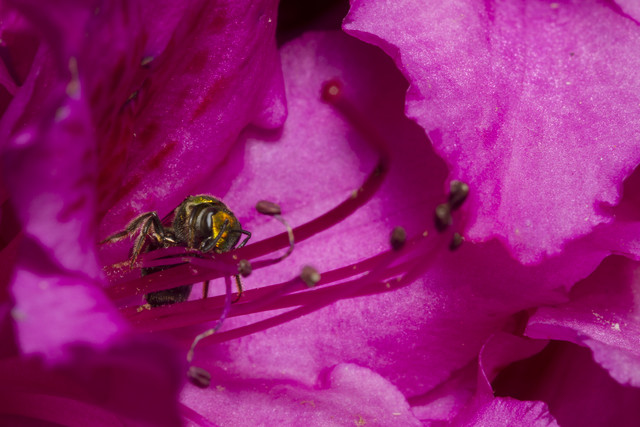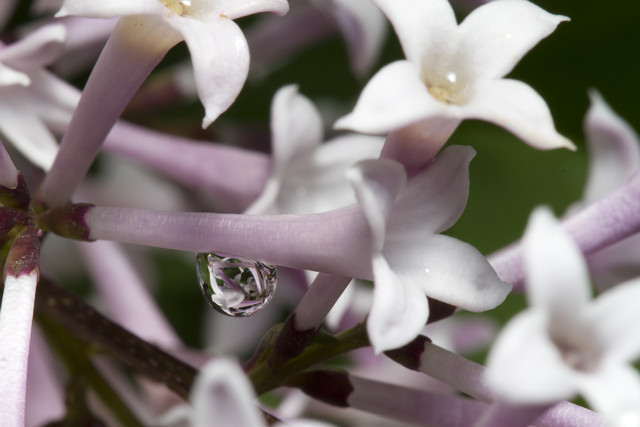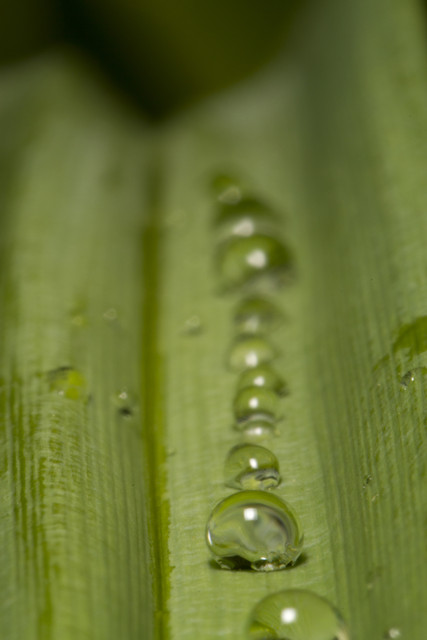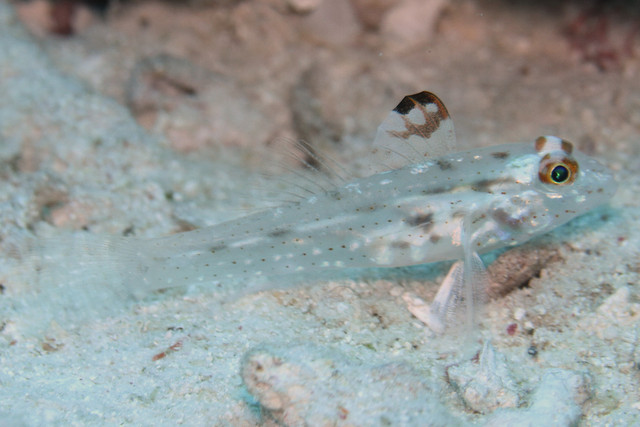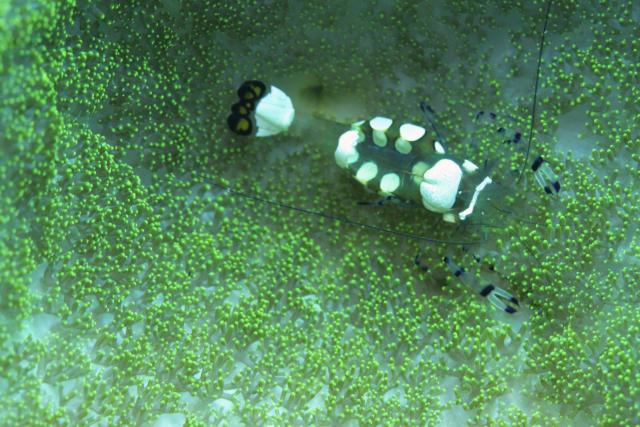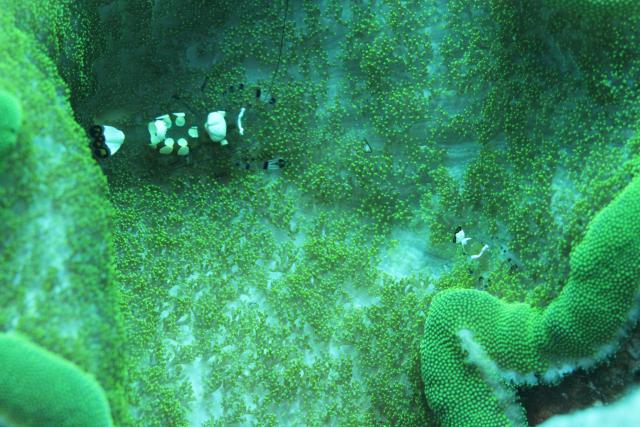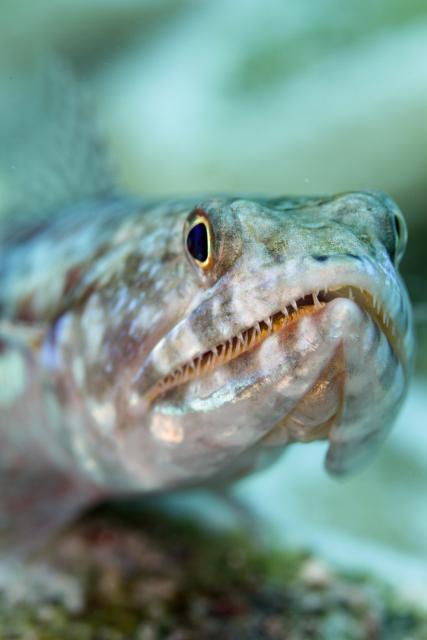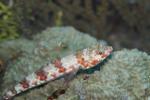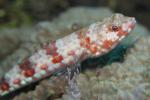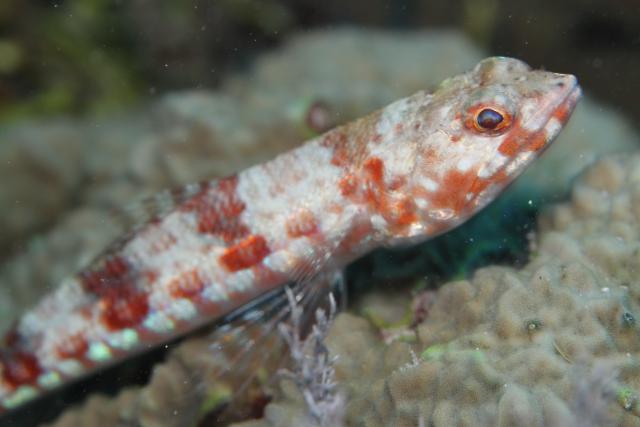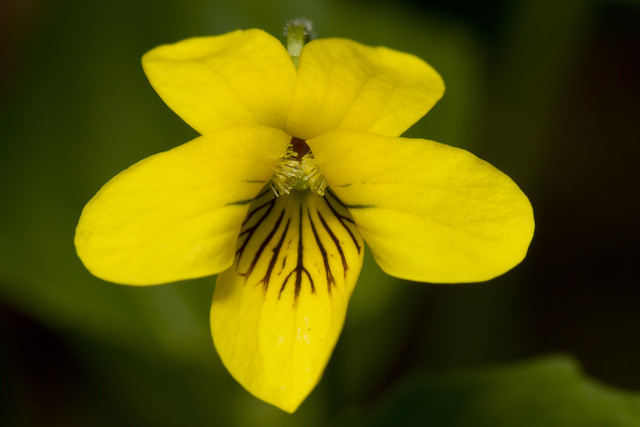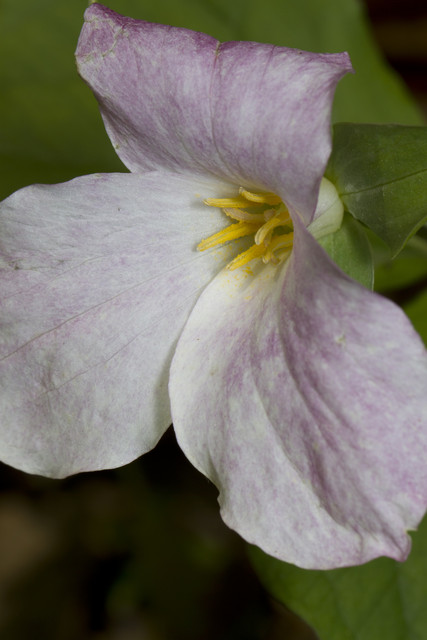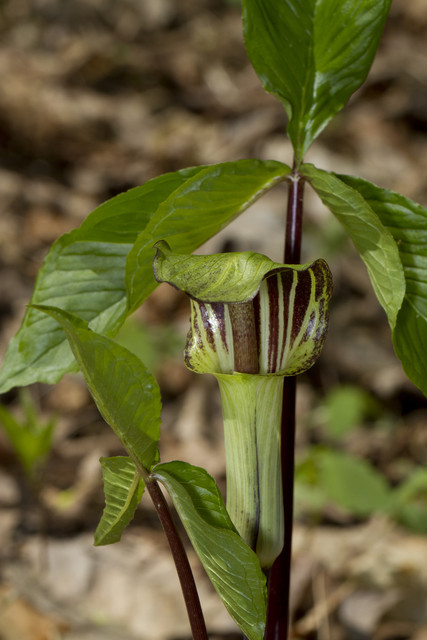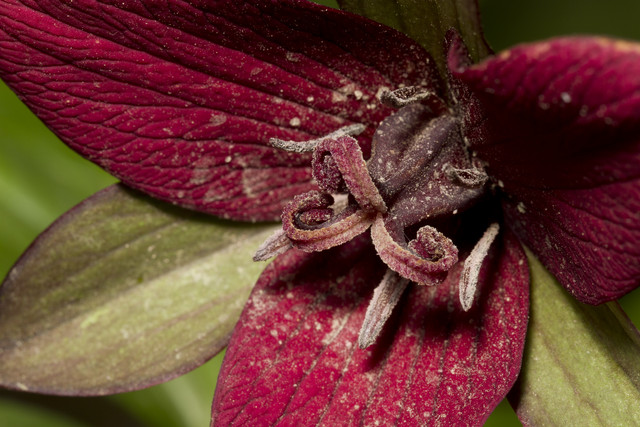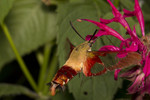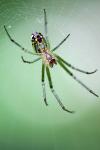flash
Warning: Adult Spider Content
ktuli — Thu, 05/26/2011 - 20:59
OK - I'll be honest, I originally had a nice calm (I'd go so far as to call it "dreamy" even) flower photo all set to share for today, but then I realized that this is my 200th post, and since I did a spider post for my 100th post, I figured I'd stick with it and share this set for my 200th. My apologies in advance to those of you who don't like spiders, I promise to share that flower photo tomorrow to make up for it.
Anyway.... our front yard is surrounded by a lot of ground vines and hostas and other low plants like that, and this time of year, they get carpeted with spiderwebs. I'm not entirely certain of the exact species (it might be Frontinella communis, but I really need to buy a good spider identification guide), but I think it is some species of sheet web. Regardless, one of the interesting things about them is that the male and female live together in the web for several days to a couple weeks.
I've tried many times in the past to photograph them, and it rarely turns out well. They are usually in hard to reach locations, making tripod use difficult, and I often have to avoid crushing Anya's flowers and plants. Their webs are extremely chaotic - not like a nice clean orb weaver web which is flat and exists on a single plane, these webs are random and usually several inches thick and that causes them to catch the light from multiple angles. And they're rather small too - probably in the range of 1/4".
But this year I was determined to try again... Ok I think I blabbered enough to get the photos off the top of the screen for those of you who dislike spiders.
Warning: The following contains adult spider content. Viewer discretion is advised.
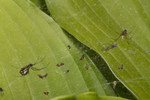 |
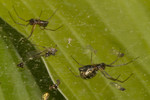 |
 |
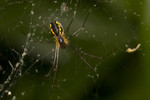 |
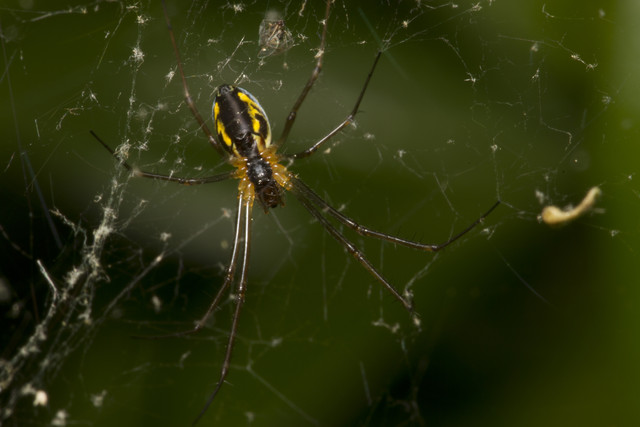 | |||
 |
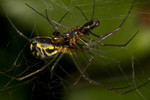 |
 |
 |
Technical Data: Canon EOS 7D, Canon EF 100mm f/2.8L Macro IS USM, 1/160, 1/200, or 1/250 sec at f/16. Canon Speedlight 580EX II flash in auto mode and wireless control. Image Stabilization on. ISO 160. RAW processing in Adobe Camera Raw. Last three photos with Kenko Teleplus PRO 300 "DG" AF 2x Teleconverter.
So, the top row of photos all basically just show the spiders. The female is the slightly larger one with the yellow stripes along her abdomen. In the first couple shots, you can see just how effective they've been at trapping various bugs, and can see how they are coexisting with each other in the same web peacefully.
The bottom row of photos all depict their mating behavior. The male would drum on the females abdomen with his pedipalps (the short "arms" by his head - in this species they look like they have large brown boxing gloves on them). After that he would either inflate an organ there or secrete a yellowish liquid (I'm honestly not sure which it was), and then pass a sperm packet to the female (the organ would deflate or the yellowish liquid would be absorbed into the female). This went on literally for hours. I stopped back repeatedly hoping to get a photo of the final act... which is the female eating the male after they have finished mating. Unfortunately, I never managed to get that shot.
But I thought capturing the mating behavior of such a tiny little spider was kind of interesting. Since then, I've noticed at least three other pairs of spiders mating as well, and every time I do, the next morning that web is inhabited by only the female. The poor guys have it rough! Then again, the females will hold on to those sperm packets for some amount of time until they're ready to lay eggs, and then fertilize probably several hundred eggs at once. Perhaps having several hundred babies to contend with is why the males willingly let themselves be eaten after mating...
Sorry if the spider photos gave you the heebie-jeebies, but thanks for stopping by for my 200th post. Leave me a comment and let me know what you think of these shots. And I promise I'll share a nice calm flower photo with no adult content tomorrow...
- Bill
Bee on Azalea Flower
ktuli — Tue, 05/24/2011 - 20:29
Technical Data: Canon EOS 7D, Canon EF 100mm f/2.8L Macro IS USM, 1/250 sec at f/16. Canon Speedlight 580EX II flash in auto mode and wireless control. Image Stabilization on. ISO 160. RAW processing in Adobe Camera Raw.
Technical Data: Canon EOS 7D, Canon EF 100mm f/2.8L Macro IS USM, 1/250 sec at f/16. Canon Speedlight 580EX II flash in auto mode and wireless control. Image Stabilization on. ISO 160. RAW processing in Adobe Camera Raw.
Droplet of French Lilacs
ktuli — Tue, 05/24/2011 - 20:12
The same day I found the day lily leaf with water droplets, I found this droplet hanging from one of the french lilacs.
Technical Data: Canon EOS 7D, Canon EF 100mm f/2.8L Macro IS USM, 1/200 sec at f/16. Canon Speedlight 580EX II flash in auto mode and wireless control. Image Stabilization on. ISO 160. RAW processing in Adobe Camera Raw.
I really like how the droplet of water seems to have an alternate world of french lilacs trapped inside. The scene is jam packed with those small lilacs and it still feels like if that drop were to pop that a million more would spill out.
- Bill
Poll: More Water Droplets
ktuli — Fri, 05/20/2011 - 20:43
It has been a while since I've done a poll, and I took several different shots of this day lily leaf with water droplets on it that I feel this is a good way to share them all. So here goes...
 |
Version 1 1/200 sec at f/16 |
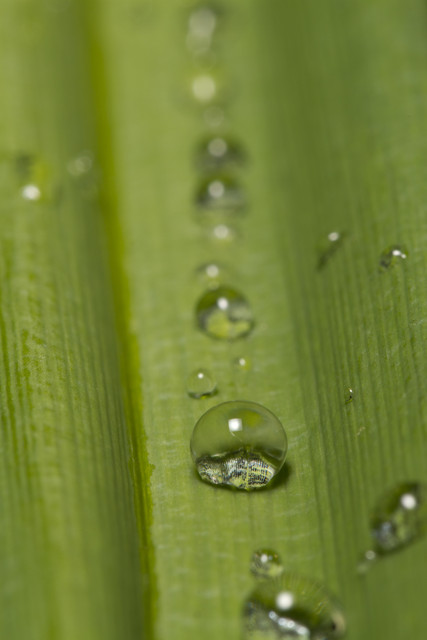 |
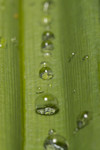 |
Version 2 1/160 sec at f/22 slight crop |
|
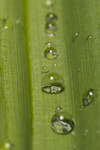 |
Version 3 1/160 sec at f/22 |
|
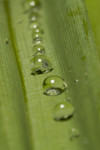 |
Version 4 1/200 sec at f/32 |
|
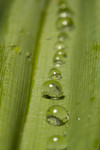 |
Version 5 1/200 sec at f/32 |
Technical Data: Canon EOS 7D, Canon EF 100mm f/2.8L Macro IS USM, shutter speed and aperture as listed. Image Stabilization on. ISO 160. RAW processing in Adobe Camera Raw (and additional cropping as listed).
I know, they all look pretty similar, but after a bit, you really can see just how different each one is. And while the differences may look random, some of them are quite intentional.
For example, you will notice that I specifically switched apertures (smaller opening, larger f/#, more depth of field) to control the depth of field as I went along, which allowed me to get more of the droplets in clarity. (Ignore that for a couple shots the shutter speed switched to 1/160 - I don't know how that happened, and apparently I fixed it after a couple shots). But then I also intentionally played around with the angles, trying to see whether a diagonal view would look better than straight centered.
I will admit that I should have been doing this whole exercise with a tripod (and preferably with a Wimberly Plamp), but I still haven't upgraded my tripod, and as such still don't use the tripod as often as I would like. However, had I done so, we'd probably have three times as many shots to compare here, so maybe it is good that I didn't...
I honestly can't choose which version I like the best. Probably because I like elements of each - some I should have combined for a single better image, and some I simply couldn't combine (ie: liking both the diagonal and the straight centered).
Cast your vote and let me know which one(s) you like best (yes, I opened this one up to multiple selections!) and don't forget to leave a comment letting me know why you picked the one(s) you did.
Thanks!
- Bill
Water Droplets
ktuli — Thu, 05/19/2011 - 19:23
Just going to post a shot I took yesterday. The rain had just eased up for a bit, and I headed out hoping to find some butterflies or bees taking advantage of the the break in the rain, but instead found plenty of shots with water droplets on the various plants. This one was on the leaf of a day lily and the line of drops just screamed to be photographed with the macro lens I had on...
Technical Data: Canon EOS 7D, Canon EF 100mm f/2.8L Macro IS USM, 1/200 sec at f/32. Image Stabilization on. ISO 160. RAW processing in Adobe Camera Raw.
- Bill
Wakatobi: Closed Anemone
ktuli — Tue, 05/17/2011 - 21:01
Most people know what an anemone fish does when it is scared... it goes and hides in the protective tentacles of its host anemone.
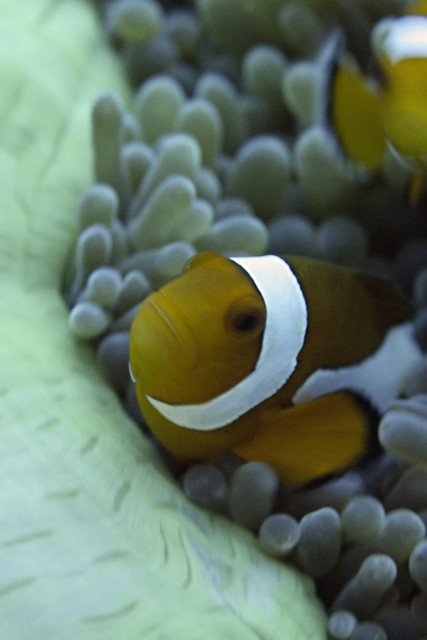
But what about when the anemone gets scared?
It just closes up shop, and that usually means the anemone fish need to push and shove to get some protection.
Technical Data: Canon EOS 7D, Canon EF 100mm f/2.8L Macro IS USM, 1/25th sec at f/8. Image Stabilization on. ISO 3200 (Auto). Ikelite Housing and Port with Ikelite 161 Strobe in TTL Mode. Removed Color Cast, Auto Smart Fix in Photoshop Elements 8.0 (mouseover for original).
As you can see when you mouseover the image, the original shot had a pretty bad blue color cast - likely because the flash did not fire (I often would rapid fire shots, and by the end of the series the flash would be recycling). Luckily, Photoshop does a decent job of cleaning up that color cast.
I don't know why I keep skipping my usual critiques, but I guess I just feel like sharing photos recently - perhaps I'll get back to the regular routine soon.
This one obviously isn't the best focus I've ever achieved, but I still think the shot works well. I also looked at trying to find a different crop for it (mainly to eliminate the partial fish in the top right corner, but couldn't find one I liked. Despite its flaws, I still really like the shot.
If you haven't seen them before, you might want to check these older posts with other anemone fish: False Clownfish and the early Sneak Peak (part 2).
- Bill
Wakatobi: Signalfin Goby
ktuli — Tue, 05/17/2011 - 20:10
I was flipping through my Wakatobi shots again tonight, and I stumbled upon this one of a Signalfin Goby (Coryphopterus signipinnis).
These guys are fairly tiny little fish - maxing out at about 1.25" - and are extremely skittish. To be honest, I don't even remember taking this photo.
Technical Data: Canon EOS 7D, Canon EF 100mm f/2.8L Macro IS USM, 1/50th sec at f/8. Image Stabilization on. ISO 400 (Auto). Ikelite Housing and Port with Ikelite 161 Strobe in TTL Mode. Removed Color Cast, Adjust Brightness -50, Contrast +10 in Photoshop Elements 8.0 (mouseover for original).
I know the shot is extremely over-exposed with the semi-translucent body of the fish and the bright white sand of the reef, even with having pulled the brightness back in Photoshop, but I am pretty pleased with the crisp focus and clarity (something I struggled with on this trip) - especially for such a small skittish subject.
Drop me a line and let me know what you think of the shot, and of the post production work.
- Bill
Wakatobi: Peacock-tail Anemone Shrimp
ktuli — Sat, 05/14/2011 - 12:44
Sorry - I don't even remember what all I did this week that I didn't get any new posts in, but here's another one from the Wakatobi trip.
I know I shared a slightly different version of this shrimp before, but I figured I would also share this version (which coincidentally is hanging from our walls in an 8x10" format) that has had a little post production work done on it.
Anya spotted this little girl (yes, I know it is a female) early in the one dive, but for whatever reason, no one else in the group got to see it. As soon as she pointed it out to me (and I figured out what she was pointing to!) I moved in and rattled off a ton of shots.
Technical Data: Canon EOS 7D, Canon EF 100mm f/2.8L Macro IS USM, 1/100th sec at f/11.3. Image Stabilization on. ISO 3200 (Auto). Ikelite Housing and Port with Ikelite 161 Strobe in TTL Mode. Removed Color Cast in Photoshop Elements 8.0 (mouseover for original).
The Peacock-tail Anemone Shrimp (Periclimenes brevicarpalis) is only about 1.5" long and lives specifically on carpet anemones where in exchange for keeping the anemone free of parasites and potentially warning off some predators, it receives protection and free meals from the scraps the anemone misses. As I said, I know this is a female because they are much larger than the males - as you can see in the photo below (the male is towards the bottom right).
Technical Data: Canon EOS 7D, Canon EF 100mm f/2.8L Macro IS USM, 1/170th sec at f/11.3. Image Stabilization on. ISO 2500 (Auto). Ikelite Housing and Port with Ikelite 161 Strobe in TTL Mode. No post production.
Unfortunately, this was the only shrimp we saw like this, and any others we saw I didn't manage to get good photos of. Which is a shame, really, because I am very fond of shrimp - especially these tropical ornamental kinds.
- Bill
Wakatobi: Reef Lizardfish
ktuli — Mon, 05/09/2011 - 19:02
I've found myself thinking back to my Wakatobi trip a lot recently. I really long to be slowly sinking below the surface of some crystal clear blue water, camera in hand, ready to go find some interesting reef inhabitant.
We saw plenty of these Reef Lizardfish (Synodus variegatus) on almost every dive. Most were in the range of 8-10 inches in length and would sit motionless on top of outcroppings. In general, they would let you approach within a few feet of them before they darted off to hide, so getting relatively close like this was not too challenging as long as you moved in slowly.
As you can see, they had tons of sharp little curved teeth that despite being tiny were kind of impressively intimidating. That, coupled with their jaw structure illustrates that they are an ambush predator. They lie still waiting for an unsuspecting fish to swim a little too close, then - *WHAM!* - lunge forward with that large mouth, using those curved teeth (much like a lizard) to keep their prey from escaping.
Cool little fish.
Technical Data: Canon EOS 7D, Canon EF 100mm f/2.8L Macro IS USM, 1/170th sec at f/8. Image Stabilization on. ISO 500 (Auto). Ikelite Housing and Port with Ikelite 161 Strobe in TTL Mode. Auto-smartfix and Removed Color Cast in Photoshop Elements 8.0 (mouseover for original)
Why This Photo: As I said, I was quite impressed with those teeth, and they help to give the fish its lizard like namesake, so I wanted to capture a shot that showed those teeth in particular.
What Works: The focus is right on the fish's eye, and more importantly on those razor sharp teeth. The varying diagonal lines (the reef shelf, the lizard fish's back, its jawline, etc) continuously lead the viewer's eyes through the frame and back again.
What Doesn't Work: The aperture could have been stopped down just a little more (perhaps to f/11) for more depth of field to show more of the fish in focus - though just enough to keep the head in focus to avoid there being distracting elements to take away from the teeth being the main point of interest. Also, potentially a horizontal format would have worked better for this long fish.
As a bonus, I have several other shots of these fish to share... though, for some reason, I liked to cut off their tails from the shots. I don't know why, but looking through all of my lizardfish shots, they are pretty much all like that. Guess I'll have to go back and try it again... ;) Just mouseover the thumbnail to display the larger version.
And as you can see, I also apparently only approach these fish from their right sides... Weird. Anyway, what I was trying to illustrate was the variety in their colors... ranging from light tan, to dark brown, and even to a bright red.
Like I said, cool little fish.
- Bill
Trillium Trails: Assortment
ktuli — Fri, 05/06/2011 - 20:51
Ok - time to just share an assortment... enjoy.
I probably have one or two more shots to share from this set, but I may take a little break to share some other stuff. Either way, stay tuned.
- Bill


